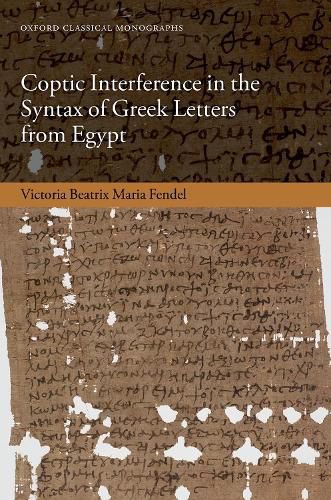Readings Newsletter
Become a Readings Member to make your shopping experience even easier.
Sign in or sign up for free!
You’re not far away from qualifying for FREE standard shipping within Australia
You’ve qualified for FREE standard shipping within Australia
The cart is loading…






Egypt in the early Byzantine period was a bilingual country where Greek and Egyptian (Coptic) were used alongside each other. Historical studies along with linguistic studies of the phonology and lexicon of early Byzantine Greek in Egypt testify to this situation. In order to describe the linguistic traces that the language-contact situation left behind in individuals’ linguistic output, Coptic Interference in the Syntax of Greek Letters from Egypt analyses the syntax of early Byzantine Greek texts from Egypt. The primary object of interest is bilingual interference in the syntax of verbs, adverbial phrases, clause linkage as well as in semi-formulaic expressions and formulaic frames. The study is based on a corpus of Greek and Coptic private letters on papyrus, which date from the fourth to mid-seventh centuries, originate from Egypt and belong to bilingual, Greek-Coptic, papyrus archives.
$9.00 standard shipping within Australia
FREE standard shipping within Australia for orders over $100.00
Express & International shipping calculated at checkout
Egypt in the early Byzantine period was a bilingual country where Greek and Egyptian (Coptic) were used alongside each other. Historical studies along with linguistic studies of the phonology and lexicon of early Byzantine Greek in Egypt testify to this situation. In order to describe the linguistic traces that the language-contact situation left behind in individuals’ linguistic output, Coptic Interference in the Syntax of Greek Letters from Egypt analyses the syntax of early Byzantine Greek texts from Egypt. The primary object of interest is bilingual interference in the syntax of verbs, adverbial phrases, clause linkage as well as in semi-formulaic expressions and formulaic frames. The study is based on a corpus of Greek and Coptic private letters on papyrus, which date from the fourth to mid-seventh centuries, originate from Egypt and belong to bilingual, Greek-Coptic, papyrus archives.